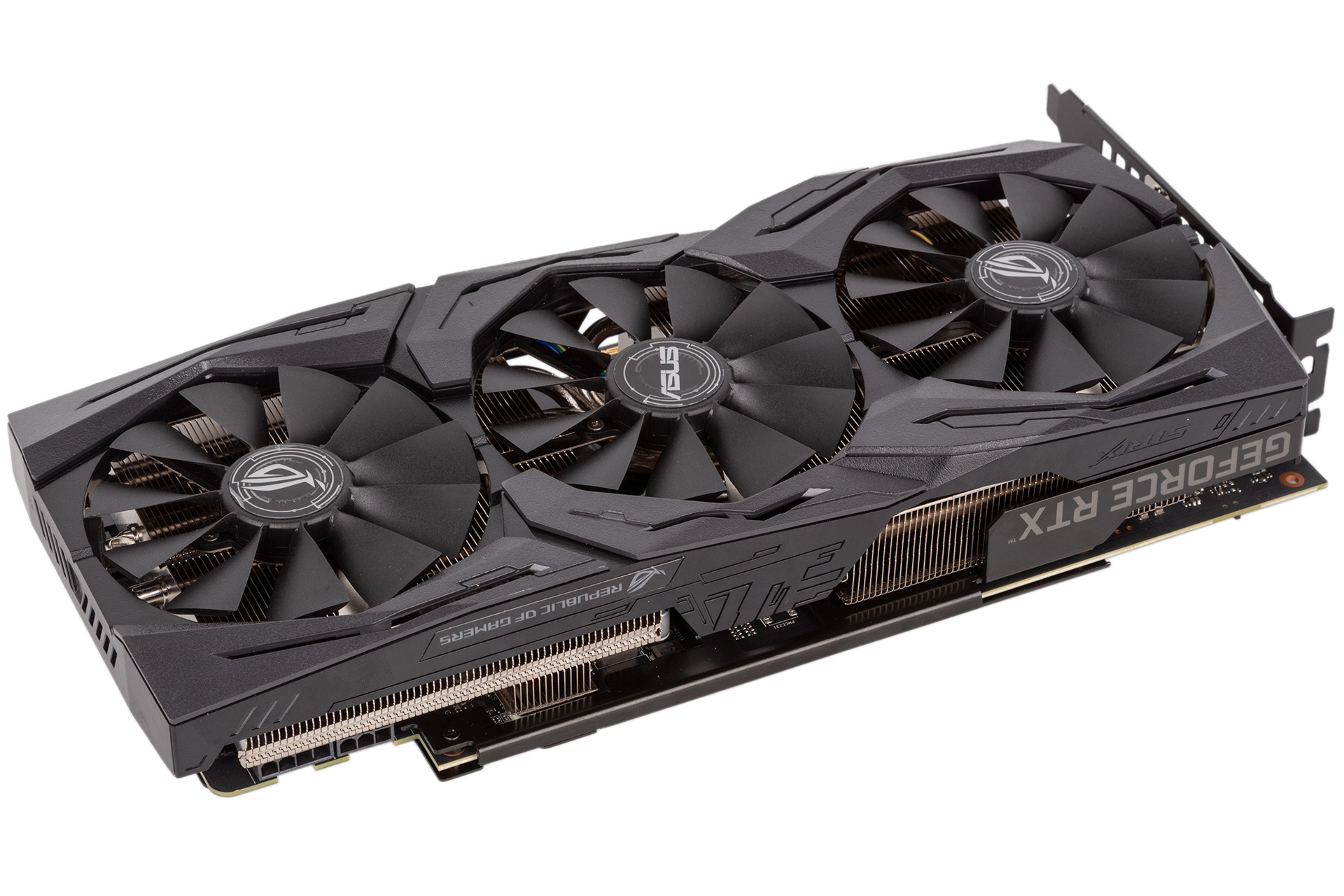Performance Analysis
In its default state, this card offers up a rock solid 1,980MHz boost speed when under load, which is around 130MHz more that we were usually seeing from the Founders Edition part. Switching to OC Mode in software saw this climb to 2,010MHz, while using OC Mode and the Performance BIOS saw it go a step further with a sustained 2,025MHz, which is frankly pretty awesome.
That said, the extra speed only translates to a performance improvement of around 3.5 percent on average compared to the Founders Edition. A baseline RTX 2070 remains comfortably ahead by 10 percent on average, while a reference RX Vega 64 emerges as victorious by just two percent or so. That latter comparison, however, disguises a lot of variance: Vega 64 is dominant in certain titles, delivering double-digit percentage gains over this card in Deus Ex and Total War: Warhammer II, for example, but actually scoring worse in some titles like World of Tanks and in the synthetic VR workloads.
Experientially, then, we’re looking at much the same situation as with the Founders Edition: This is a card that will suit high-refresh rate 1080p panels and regular refresh rate 1440p monitors very well indeed. The RTX 2060, however, isn’t fully suitable for 4K, as some titles will need High or Medium settings to remain playable – the overclock on this card will not change that.

The small boost in performance carries a heavy power penalty too, with this card seeing our system consumption go up by around 50W compared to using the Founders Edition. Turing is not very efficient when it comes to raising clock speeds, so this isn’t surprising, but it unfortunately pushes power consumption beyond even RTX 2070 levels.
As expected, the cooler is very powerful indeed. Even in Q BIOS, a delta T of 41°C is excellent; there’s really no need to go cooler than this, but the P BIOS sees it drop to a ridiculously cool 34°C. We see fan speeds of around 1,250 RPM with the Q BIOS and 1,600 RPM with the P BIOS, and either way the Wing-Blade fans are decidedly quiet, with the card barely being audible when using the Q BIOS.
With our manual overclock, we were seeing clock speeds hitting the 2,070MHz-2,100MHz region, which is pretty fantastic. The card didn’t really need to throttle up the fans to accommodate this either. What we see as a result is performance that is almost on par with RTX 2070 but never better than it.
Conclusion
As we bring this review to a close, it’s the usual conundrum for a Strix GPU review. On the one hand, the quality of this card is excellent, but on the other the pricing is high to the point that it’s bordering on the absurd.
Starting with the positives, we have a card with excellent build quality right down to the PCB, a generous core overclock, and nifty enthusiast-grade features like the dual-BIOS switch and onboard fan/RGB headers. The dual-HDMI outputs are a good idea for current-generation VR headsets, although the VirtualLink connector disappearing is a shame, even if it’s a very forward-looking feature right now. The silicon lottery means we may have just received a very good sample (or even a pre-selected one), but nevertheless our card overclocked to RTX 2070 levels of performance, which is decent considering the RTX 2060’s inherent limitations. Finally, the cooler delivers the winning combination of very low temperatures and very low noise.

There are one or two irks, however, such as the ongoing RGB software security issues that Asus is facing and the fact that the memory doesn’t get an overclock. We also fail to see why Asus doesn’t just run the card at the higher OC Mode frequencies by default – anyone who wants to overclock the card is probably going to try and push it harder than this anyway.
The pricing, however, is once again the main sticking point for us. Everyone expects a tax for Asus ROG, and Asus has clearly justified this part having at least some price premium. However, so high a premium is simply too hard to swallow in this instance. While the cooler and features are solid here, performance is king in the GPU market, and the current pricing of both RTX 2070 and Vega 64 throws the £455 tag here into almost laughable territory. The former starts at £460 and is around 10 percent quicker than this card is out of the box, while the latter is as low as £390 yet outperforms this card in certain titles and is near enough a match for it even in games where it’s weaker.
In spite of its many positives, we simply don’t believe this card is a sensible purchase. Not every PC purchase needs to be wholly sensible, of course, and the ROG Strix brand certainly isn’t about that, but if your pricing is too far off the mark in the highly scalable world of GPUs, it’s difficult to justify. And even if you are the sort that loves the features of a card such as this, the RX Vega 64 ROG Strix is available for £45 less. It’ll run less efficiently, but otherwise it’s clearly the card to go for instead.

MSI MPG Velox 100R Chassis Review
October 14 2021 | 15:04









Want to comment? Please log in.